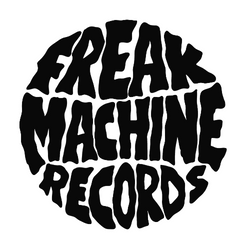From Heartfelt Anthems to Subcultural Icon: The Evolution of Emo Music
Emo music, with its raw emotional expression and introspective lyrics, has been a powerful force in the music scene for decades. Emerging in the 1980s and evolving through various waves, it has become an influential subculture that continues to resonate with listeners worldwide. In this blog, we'll take a journey through the evolution of emo music, exploring its origins, key milestones, and enduring impact on music and culture.
Roots in Hardcore Punk and Post-Hardcore
The origins of emo music can be traced back to the punk and post-hardcore scenes of the 1980s. Bands like Rites of Spring and Embrace pioneered a sound that combined the intensity of punk with emotionally charged lyrics. These early emo pioneers laid the foundation for a genre that would prioritize vulnerability and self-expression.
The Mid-90s: Emo Goes Mainstream
In the mid-1990s, emo began to gain wider recognition with bands like Sunny Day Real Estate and Jawbreaker. These acts introduced a more melodic and accessible sound, reaching a broader audience. Emo's introspective themes and distinctive musical style set it apart from other genres, capturing the hearts of a devoted fan base.
The Second Wave: Commercial Success and Diversity
The late 90s and early 2000s marked the second wave of emo, characterized by an influx of bands like Dashboard Confessional, Jimmy Eat World, Fit For Rivals and Taking Back Sunday. This era saw emo music achieving commercial success, with emotionally charged anthems resonating with a generation grappling with complex emotions. The diversity within the genre expanded, with bands exploring different musical elements while maintaining the core emotional intensity.
The Emo Revival: A New Generation Finds its Voice
In the mid-2010s, a resurgence of emo music, often referred to as the "emo revival," brought a fresh wave of bands like Modern Baseball, The Hotelier, and Sorority Noise. This revival embraced a DIY ethos, with many bands self-releasing their music and building dedicated fan bases through grassroots efforts. The revival highlighted the enduring relevance of emo, showing that its emotional resonance remained as potent as ever.
Emo's Influence on Contemporary Music
Emo's impact on the wider music landscape is undeniable. Elements of emo can be found in a diverse range of genres, from pop-punk to indie rock and even hip-hop. Artists like Billie Eilish, Machine Gun Kelly, and Lil Peep draw inspiration from emo's emotional authenticity, incorporating it into their own music and broadening its influence.
Emo's Enduring Legacy
Today, emo music continues to thrive and evolve. Its legacy can be seen in the continued popularity of bands from previous waves, as well as the emergence of new acts that carry the torch forward. The emotional honesty and vulnerability that define emo remain essential components of the genre's enduring appeal.
The evolution of emo music is a testament to its enduring power and relevance. From its humble beginnings in the punk and post-hardcore scenes to its widespread influence on contemporary music, emo has left an indelible mark on the musical landscape. Its ability to capture the complexities of human emotion and offer solace to listeners is a testament to its enduring legacy. As the genre continues to evolve, it will undoubtedly inspire future generations of musicians and resonate with audiences around the world.
